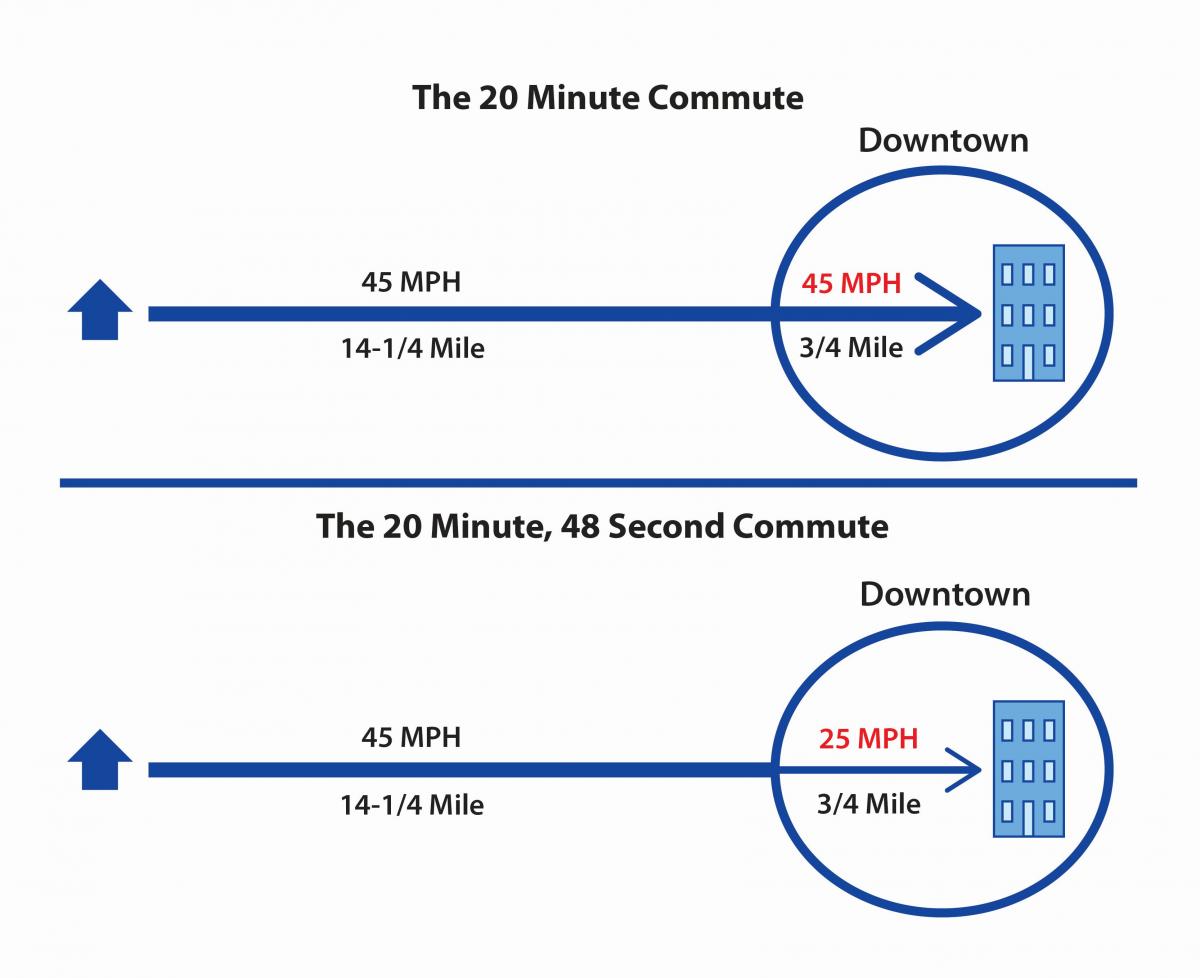Street life is dramatically impacted by the speed of vehicles. Whether they know it or not, most pedestrians understand in their bones that a person hit by a car going 35 mph is roughly seven times as likely to die than if the car is going 25 mph. Any community that is interested in street life—or human lives—must carefully consider the speed at which it allows cars to drive in places where people are walking.
And in most American cities, the place where people are most likely to walk is downtown. Acknowledging this fact opens up real possibilities, as it allows us to have dramatic impact on walking while impacting driving time only minimally. By focusing on vehicle speeds downtown, we can make walking safer for the most pedestrians with the least amount of driver inconvenience.
The illustration below tries to make this point clear. It shows that the difference between an attractive and a repellent downtown may be less than a minute of drive time. Would most people be willing to spare 48 seconds each day if it meant that their city was a place worth arriving at? Probably.
This diagram, from Nelson\Nygaard, describes how a significant change in downtown speeds typically results in a minimal change to commute times:

Read the rest of this article at: Public Square: A CNU Journal

